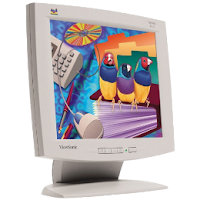They can make a phone connection sound as if the caller is gargling with ball bearings. They drop out at the most inopportune moments.Other than mobility, there are few reasons to use a cell phone, in my opinion. I'm not one of the people stampeding to drop my plain old land line service.
Loss of a cell phone often means that the stored list of contacts and telephone numbers is lost. I often hear from friends and acquaintances that haven't been able to contact me or someone else because their cell phone failed and had to be replaced, they dropped it into the toilet, or whatever. If the typical user has 50-100 contacts, unless they were fastidious about copying the information down somewhere or backing it up on their computer, they're faced with the task of collecting it all over again through their social network, a process that can take months. Did you wonder why your good friend so-and-so hasn't called you in over half a year? He may not be angry with you; perhaps he just lost his cell phone. Sure, there are cellular services that offer telephones with computer interface cables, allowing one to back up and restore the contact list, even load new ringtones and features, but how many users have sufficient technical skill to figure out how to install the software and hardware, and then make it work? What's more, the software, if available at all, may only work on Windows XP or Windows Vista.
(Too bad, Windows 98, Apple Mac and Linux users!) Since it is well-known that most people never back up their computer disks, what makes you think they'd back up the memory in their cell phone? On the nasty side, there are services that offer crippled cell phones that
can't be connected to a computer.
Virgin Mobile USA is one that comes to mind, with their pay-as-you go plans. They won't allow you to buy a fully functional phone elsewhere and register it with their service, so if you go that route, you're reduced to laboriously copying the information out using the phone's minuscule keypad and display, and if needed, re-entering in the same, tedious fashion. It can take many hours.
Even more disturbing is the use of cellular communication devices being used more and more as personal digital assistants (PDAs). My phone requires entry of a security code after it is turned on, but if I should lose it somewhere, whoever picks it up would be able to see all my contacts, so long as the unit still has battery power and doesn't get turned off. I keep it that way for my convenience, but it also means I need to severely restrict what kind of information I store in the unit. However, what about our friends? Perhaps they keep all sorts of personal information in their phones, such as street addresses, passwords, account numbers, enough for an identity thief to have a field day. Let's hope that the information they have in there is
their information, not
yours. Having contact information available to others may not be all bad, however. You can program one or more entries called "ICE" (
In
Case of
Emergency), so that if you were incapacitated and couldn't speak or act on your own behalf, emergency personnel could use that information to contact a friend or family member.
As emergency communications devices, cell phones are only marginally more reliable than smoke signals, and in much of the mountainous areas of the western United States, they're nearly useless, due to their line-of-sight connection characteristics. On a good day in flat country, they'll reach maybe 10 miles, even though the radio horizon may be 20-25 miles away. They just don't pack enough transmitting power to go much beyond that. In urban areas, repeaters are spaced very close together, giving continuous coverage, but that's not true when you get more than 20 miles out of town, unless you stay within a few miles of major highways. You can go over a hill and lose contact with a repeater that is just a few miles away; one might as well be on the dark side of the Moon. If you like off-road motor sports or hiking in the back country, you can leave the cell phone behind, because it would be just so much dead weight to lug around. Forget about the UHF band
GMRS walkie talkies that seem to be so popular now, as they also are line-of-sight devices with a range of about five miles in open country. A pricey satellite phone, a cheap, old-style Citizens' Band radio or an emergency signal mirror would be better choices.
Most digital cell phones can't be used for FAX services. The same characteristics that make your voice sound choppy and garbled totally ruin the audio signal that facsimile machines use to talk to one another. They also don't have a way to connect a computer modem for a dial-up Internet connection; even if they did, they'd fail for the same reason that FAX doesn't work, or you'd be limited to painfully slow connections. Alright, perhaps you don't have much use for FAX or dial-up Internet these days, with text messaging, e-mail over high-speed Internet and all, but I thought you might like to know.
In a disaster, such as earthquakes, wildfires, floods, and so on, cell phone systems seem to become unusable much faster than land lines. Sure, if enough people try to make calls on land line phones at the same time, it will overload the central office, but individual cells can get overloaded much more quickly. You'd think that the distributed nature of cellular communications would make them
less vulnerable, but my experience seems to show that the opposite is true.
Unlike a squelched two-way radio, the phones use a fair amount of power just staying in touch with the nearest repeater. Moreover, their batteries are tiny, and the smaller the telephones get, the smaller the batteries, leaving them with very little reserve capacity. Cell phone lithium-ion batteries wear out after two to three years of service and seem to run down just when you need them most. My relatively old Kyocera "candy bar" phone is supposed to have enough battery capacity to operate on standby for five to seven days, but I've seen it get nearly drained in just four or five
hours on occasions when I've taken it along in mountainous areas and forgot to switch it off. You'll often get the same effect by being inside a concrete-and-steel building in the middle of a city.
The now-obsolete analog cell phone service was fairly tolerant of weak signals as one got farther away from the repeater. Most, if not all, providers in the U.S. shut off their analog service several years ago, so the only types of cell phones now operating are digital. Just like counting in base 2, they either work, or they don't. If you find yourself in a weak coverage area, moving a few feet in any direction can mean the difference between having a telephone conversation or having nothing. It may make all the difference in the world to you if your conversation happens to be with your local 911 emergency services at the moment. Weak coverage may not even mean being 10 miles out of town on a country road — it may be in your own house in town, so that every time you make or receive a call, you need to stand on the southeast corner of the front porch and stay within a radius of two feet of that magic spot to maintain the signal. For heaven's sake, don't bend over or turn around to pick something up, because you'll lose the signal! That's one of the reasons radio show hosts often refuse cell phone callers: It's no fun for the audience to listen to conversations that get cut off in mid-syllable.
The sound quality of digital cell phones is horrible. They limit the bandwidth of the sound coming from your mouth, cut the continuous waveform into little chunks, then convert it to a stream of numbers. What comes out the other end sounds choppy, raspy and hard to understand, even from the best of digital telephones. It seems to get worse when the local repeater is heavily loaded. There are technical reasons for this. The move from analog to digital service was made to allow more users to have conversations simultaneously, but in the physical world governed by natural laws, this didn't come for free. More users means sharing limited bandwidth with an attendant drop in signal quality for everyone. If you don't like the sound of solid-state digital telephone answering machines (the kind that work without a tape cassette), you probably don't like the sound of digital cell phones, either. Radio show hosts often don't like them for the same reason.
Land lines work when the power is out. The telephone company maintains large banks of storage batteries, or smaller batteries combined with an emergency generator powered by a Diesel engine. They can keep their central office and all the phones in town powered up during a natural disaster for
days. Can you keep your cell phone battery charged for days when there's no juice at the wall socket? Even if you can find a way to charge the batteries, with solar cells or a hand-crank generator, there's no assurance that the individual cell repeaters will have backup power for several days, or even several hours.
Your local 911 emergency services know
exactly where you are when you call for help from the land line in your house, but it is not necessarily true of cellular communications. Although there are now means of triangulating your cell phone's position, it's only accurate to a few hundred feet at best, and a few miles at worst. That's not a good thing when you're waiting for police, medical or search-and-rescue assistance, as the family of the late CNET editor
James Kim tragically learned in December 2006.
A legitimate purpose for cell phones is their portability and ability to provide improved accessibility when one is away from the home or office. If one subscribes to call forwarding for the land line, whenever one leaves home, one can have all incoming calls forwarded to a cell phone. It's a boon for adult children monitoring aging parents, or for parents staying in touch with young children. In a panic, instead of having to remember multiple telephone numbers and trying to guess which one to use at the moment, friends and family members just need one land line number and enjoy a high probability of being able to get a live person quickly, instead of a voice mail system or an answering machine. Until we all have
Star Trek communicators, that's the best technology has to offer.
Update, April 28, 2009: On April 9 this area lost all cell phone connectivity for about a day as a result of sabotage to some fiber optic cables. Those who relied on only cell phones and VoIP phones had nothing at all — no way to call for police, fire or medical assistance. Since the fiber optic cable also carried Internet signals, email, instant messaging and Twitter were no longer available, either. Even E911 emergency services weren't available, because they relied 100% on those same cables. Bummer! However, folks with copper cable land line phones could, for the most part, still call friends and neighbors within the local telephone exchange, and thanks to help from local amateur radio operators, the fire and police services muddled through until the damage was repaired.


